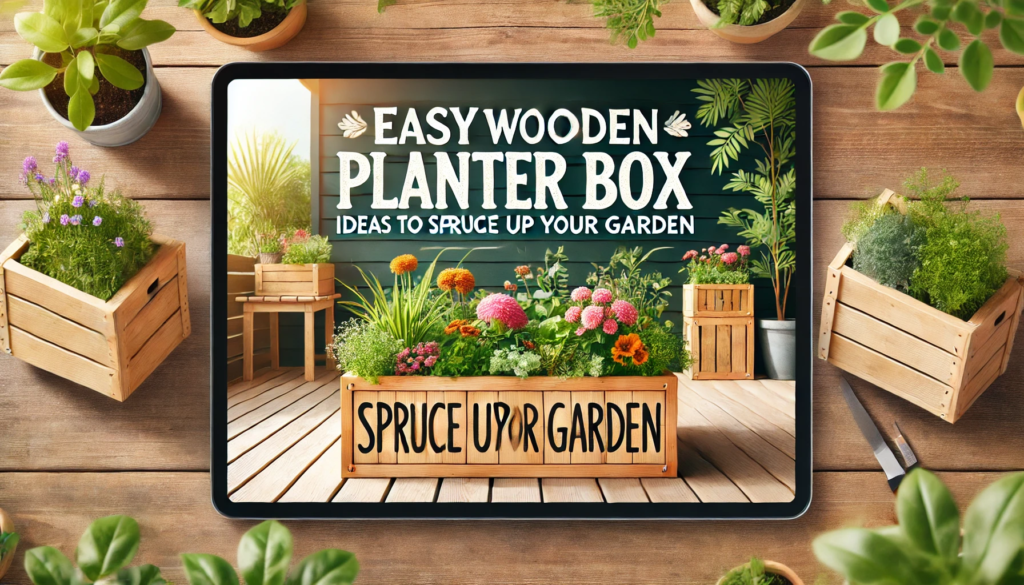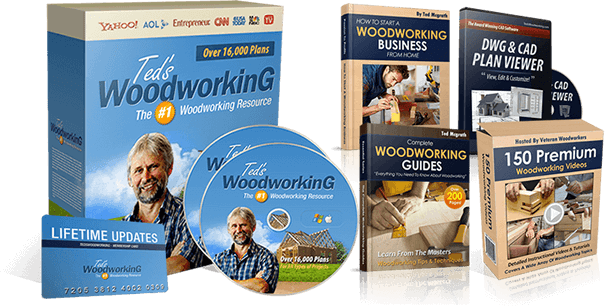Easy DIY Wooden Planter Box Ideas to Spruce Up Your Garden
Looking to elevate your garden without breaking the bank? DIY wooden planter boxes are a great way to add charm and functionality to your outdoor space. Whether you’re growing herbs, flowers, or veggies, these planter box ideas are perfect for beginners and experienced DIYers alike.

Why Choose Wooden Planter Boxes?
Wooden planter boxes offer a blend of rustic appeal and practicality. They’re versatile, easy to build, and can be customized to fit any garden style. Plus, they’re eco-friendly when using sustainable or reclaimed wood.
“A wooden planter box isn’t just a gardening tool—it’s a creative extension of your garden’s personality.” – Gardening Enthusiast
Benefits of DIY Wooden Planter Boxes
- Affordable: Cost-effective compared to store-bought planters.
- Customizable: Tailor the size, shape, and finish to suit your space.
- Portable: Lightweight designs make it easy to rearrange your garden layout.
- Enhanced Drainage: A raised design helps with better water flow.
Tools and Materials You’ll Need
| Materials | Tools |
|---|---|
| Wooden planks (cedar, pine) | Measuring tape |
| Galvanized nails or screws | Saw (hand or circular) |
| Wood glue | Drill |
| Sandpaper | Screwdriver |
| Wood stain or weatherproof sealant | Paintbrush |
Creative DIY Wooden Planter Box Ideas
1. Classic Rectangular Planter Box
The timeless rectangular design is perfect for herbs or flowers. Its simple shape makes it beginner-friendly and highly functional.
2. Tiered Planter Boxes
Maximize your planting space with tiered designs. These are ideal for small gardens, allowing you to grow a variety of plants vertically.
3. Rustic Crate-Style Planter
Repurpose wooden crates into stylish planters. Add a coat of stain or paint for a unique vintage look.
4. L-Shaped Corner Planter
An L-shaped planter fits neatly into corners, making it a great option for patios or balconies.
5. Wheelbarrow Planter
Turn an old wooden wheelbarrow into a mobile planter for a whimsical touch to your garden.
6. Raised Planter with Benches
Combine functionality and seating by building a raised planter box with integrated benches on either side.
Start Your Next Project With Teds’ Archive Of 16,000 Plans!
Instant access to all 16,000 woodworking plans with step-by-step details, photos, materials lists and more
Monthly free plans with lifetime membership access – No renewals, recurring fees or other charges


Step-by-Step Guide to Build a Simple Wooden Planter Box
Step 1: Plan and Measure
Decide on the dimensions of your planter. For example, a 3-foot long, 1.5-foot wide, and 1-foot deep box works well for most plants.
Step 2: Cut the Wood
Measure and cut wooden planks for the sides, base, and legs (if you’re adding height). Sand the edges for a smooth finish.
Step 3: Assemble the Frame
Use wood glue and screws to attach the side planks together, forming a rectangular or square frame.
Step 4: Attach the Base
Secure the base planks to the frame. Leave small gaps or drill holes for proper drainage.
Step 5: Add Finishing Touches
Apply a weatherproof sealant or stain to protect the wood from moisture and UV damage.
Step 6: Line and Fill
Line the interior with landscape fabric, then add a layer of gravel for drainage and top it off with potting soil.
Design Tips for Stunning Wooden Planters
- Add a Pop of Color: Use outdoor paint to match your garden’s theme.
- Incorporate Decorative Elements: Attach metal corners, handles, or carved designs for added flair.
- Play with Heights: Create planters of varying heights to add depth to your garden layout.
- Use Recycled Materials: Repurpose old pallets or furniture for a sustainable option.
Perfect Plants for Wooden Planter Boxes
- Herbs: Basil, parsley, mint, and thyme thrive in compact spaces.
- Flowers: Petunias, marigolds, and geraniums add vibrant color.
- Vegetables: Grow leafy greens, cherry tomatoes, or peppers.
- Succulents: Low-maintenance and perfect for modern aesthetics.
Caring for Your Wooden Planter Boxes
- Protect the Wood: Apply a fresh coat of sealant annually to prevent rotting.
- Monitor Drainage: Ensure drainage holes remain unclogged.
- Replace Soil Periodically: Refresh soil to maintain plant health.
- Clean Regularly: Wipe down the exterior to keep it looking fresh.

Conclusion
DIY wooden planter boxes are a simple and stylish way to spruce up your garden. From classic designs to creative innovations, these planters are perfect for any space. Building them yourself not only saves money but also gives you a sense of accomplishment every time you see your garden thrive.
“Gardening is the art of nurturing life, and a wooden planter box is the perfect canvas for your green thumb.” – DIY Enthusiast
FAQs
- What type of wood is best for planter boxes?
Cedar and pine are popular due to their durability and resistance to moisture. - How deep should a wooden planter box be?
A depth of 12–18 inches is ideal for most plants. - Can I use untreated wood for my planter box?
Yes, but it’s recommended to apply a sealant to prevent rotting. - How can I make my planter box last longer?
Use weatherproof treatments and ensure proper drainage. - What are the benefits of raised planter boxes?
They improve soil drainage, reduce pest issues, and make gardening more accessible.
See Also: